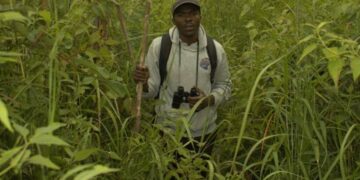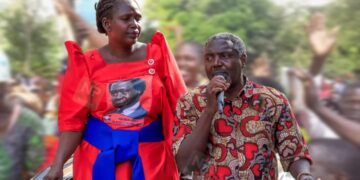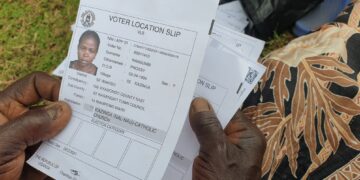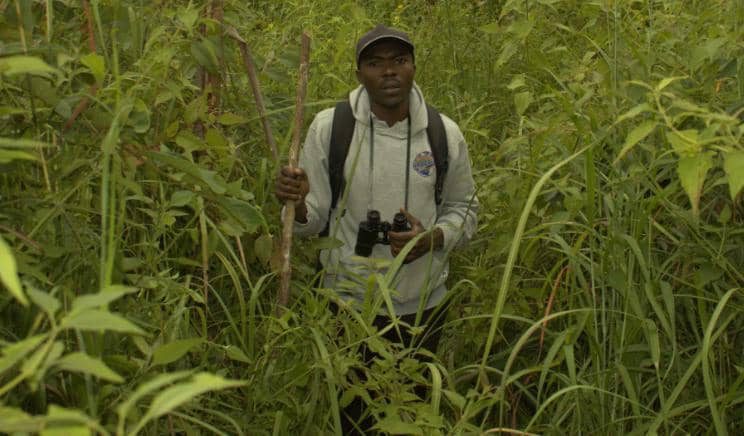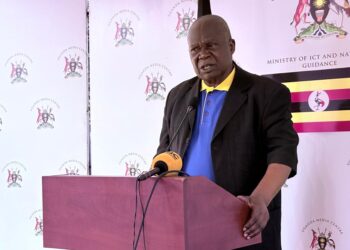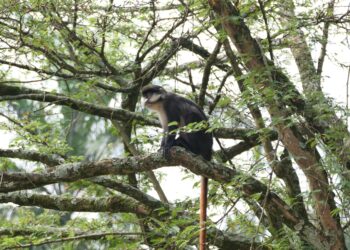OPINION
Uganda, a birdwatcher’s paradise, boasts over 1,080 bird species, from the majestic Shoebill in the swamps of Mabamba to the vibrant Great Blue Turaco in the rainforests of Kibale.
Yet, behind this avian wealth lies a silent crisis shrinking habitats, illegal wildlife trade, and climate change all accelerated by limited funding and weak enforcement of conservation policies. Despite progressive laws like the Wildlife Act (2019) and commitments to international treaties, Uganda’s bird conservation efforts are starved of resources and crippled by lax in law/policy enforcement. This article delves into how these gaps are threatening Uganda’s birds, with facts from the community and key stakeholders in the field of Bird conservation.
Uganda’s conservation agencies both governmental and NGOs, such as the Uganda Wildlife Authority (UWA), Nature Uganda, Avian Conservation Uganda Society (ACUS) among others, rely heavily on foreign donors. When funding dries up, critical programs collapse.
In 2025, the US cut off the USAID funding which was giving a big hand in the bird conservation among other wildlife projects in Uganda which made most projects to stall especially that were ongoing. The USAID’s Uganda Biodiversity Fund which is implemented by Uganda Biodiversity Fund (UBF) which was focusing on restoring and maintaining the Key Biodiversity Areas (KBAs) and increasing the resilience of surrounding communities was cut off. Where does this leave those areas that were funded?
The $15 million project “Graduating to Resilience Scale Activity” which was set to run from 2024-2027 in Northern Uganda’s Lamwo District, was critically impacted by the US funding freeze. Several other conservation projects stalled not forgetting various projects that are ongoing in the Karenga region, Karamoja, focusing on sustainable agriculture and wildlife conservation. All these were crippled!
Again, several projects such as the Green Climate Fund (GCF) specifically for the “Building Resilient Communities, Wetland Ecosystems and Associated Catchments in Uganda” was cut, significantly impacting wetland projects in Uganda including the Lutembe Bay, a key Ramsar site. This has propelled the real estate developers and the sand miners and rose farm expansion, displacing migratory birds like the White-winged Black Tern, Lesser black-backed gull, black-headed gull among others. No wonder we are seeing birds dieing day by day, seeing reduction in the migratory birds coming to this wetland and the waters turning colours. Alot has been done to restore to bring back the wetland including research, community engagement, policy implementation, the media has done its role, but it seems all this land on deaf ears.
Without proper funding, vital bird population studies are abandoned.
The African Grey Parrot, once abundant in Mabira Forest, has seen a drastic decline due to poaching and illegal trade, “it is estimated that over 800,000 parrots were captured between 2000 to now, with 40,000 parrots being captured illegally each year” (Daily Monitor, May 2023). Yet, no recent census exists because the UWA and other bird conservation agencies lack the budgets to conduct surveys.
Birdwatching could be a multi-million-dollar industry for Uganda, but poor infrastructure and marketing limit its growth. Tourism sector players say that with the right investment, Uganda can earn as much as $700m by 2030 basing on the average amount a birder spends between 18 to 25 days which is $350 per day.
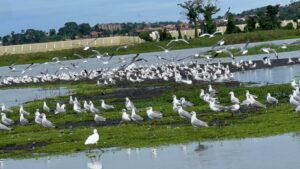
Bigodi Wetland Sanctuary near Kibale National Park survives on small entrance fees from tourists. With better funding, it could expand boardwalks, train more guides, and attract high-paying birding tours, directly funding conservation.
Even with strong laws, enforcement is weak due to corruption and understaffed agencies.
Yes, several poachers and bird traffickers have been arrested, some convicted, but there are some that still go unchecked and others are released with a small fine sending a message that bird trafficking is low risk.
Encroachment on Protected Areas: Wetlands and forests critical bird habitats are being destroyed with little consequence: Nakivubo Wetland, once a haven for Papyrus key site for water purification and flood controller, has been over 60% drained for urban expansion and sand mining. Despite court orders halting construction, developers continue unchecked.
The Wildlife Act prescribes harsh fines and jail terms for wildlife crimes, but few offenders face real consequences.
The Ripple Effect: How These Failures Hurt Uganda
The Shoebill Stork, Uganda’s most iconic bird, is now fewer than 500 individuals due to habitat loss. Migratory birds like the European Roller are avoiding Uganda as stopover wetlands disappear.
Lost Tourism Revenue:
Birdwatching tourists spend about $1,500 per trip, but Uganda loses millions annually due to poor conservation for example Queen Elizabeth National Park could rival Kenya’s Maasai Mara in bird tourism if only its bird habitats were better protected. Birds play vital roles in seed dispersal, pest control, and pollination therefore, their decline threatens agriculture and forests.
The question that everyone is always asking is “What Can Be Done?”
Increase Government Funding by ring-fencing tourism revenue. A given percentage of park entry fees should directly fund bird conservation. This will also reduce overreliance to foreign aid for bird conservation
Tax incentives for conservation donors: Encourage local businesses to invest in bird projects
Strengthen Law Enforcement: Establishing patrols along the gazetted conservation areas and fast-tracking bird trafficking cases and ensure the laws and policies are put in place as stipulated.
Community engagement by training more locals such that they can help to monitor and report illegal activities that threaten the ecosystems, allowing the responsible bodies to respond swiftly.
Alongside establishing and supporting the bird clubs in schools, the government should incorporate wildlife programs in all school curricula, teaching children the value of birds and other wild animals, the factors that threaten their ecosystem and how they can participate in their conservation.
We accept and appreciate Uganda Wildlife Authority (UWA) what it is doing to combat all the above challenges, but there’s a big gap to cover, which just increased funding on conservation projects could reduce.
Will Uganda’s Birds Survive?
Uganda’s birds are at a crossroads. Without urgent action more funding, stricter enforcement, and smarter policies species like the Shoebill and African Grey Parrot among other endangered species could vanish from Uganda’s skies.
But there’s hope. With stronger political will, community involvement, and ecotourism investment, Uganda can still secure a future where birds thrive and where their songs continue to echo across its forests, swamps, and savannas.
By Berian Tatweebwa,
The writer is a Head of Programs and Education at Avian Conservation Uganda Society(ACUS)
Email: ar@acugs.org
